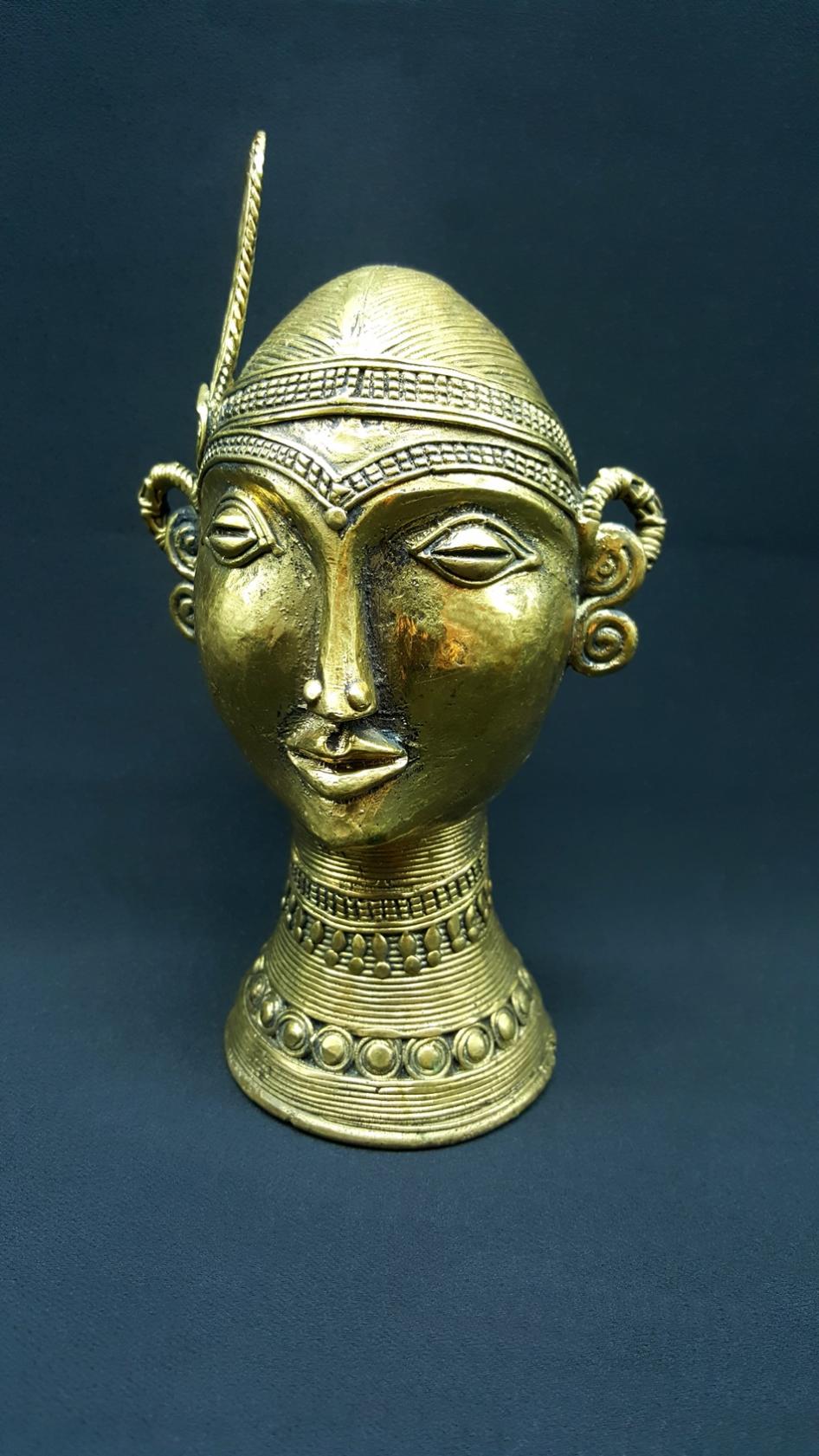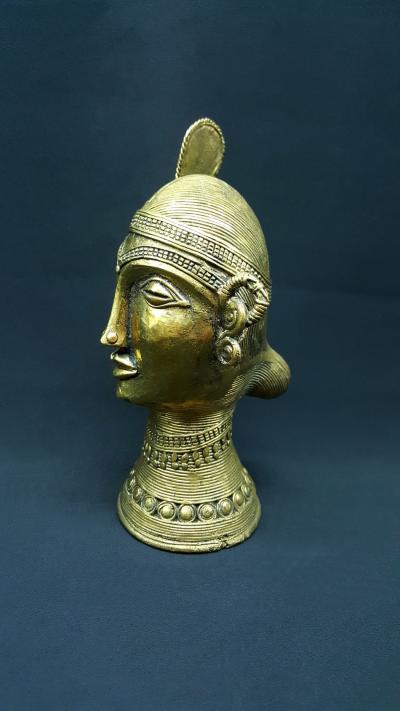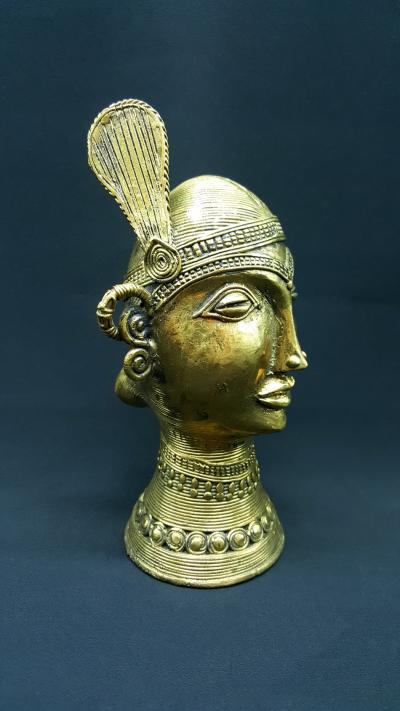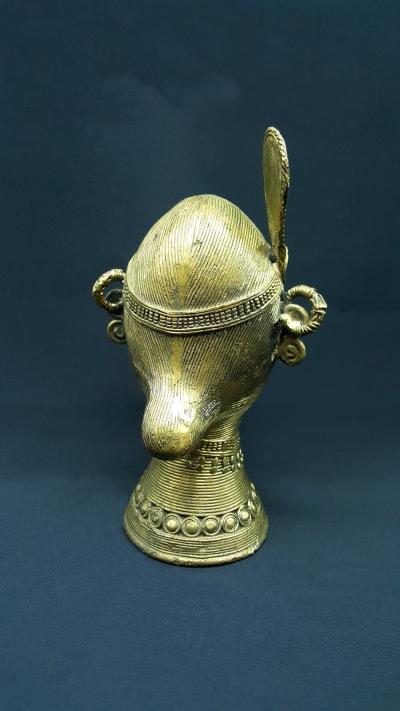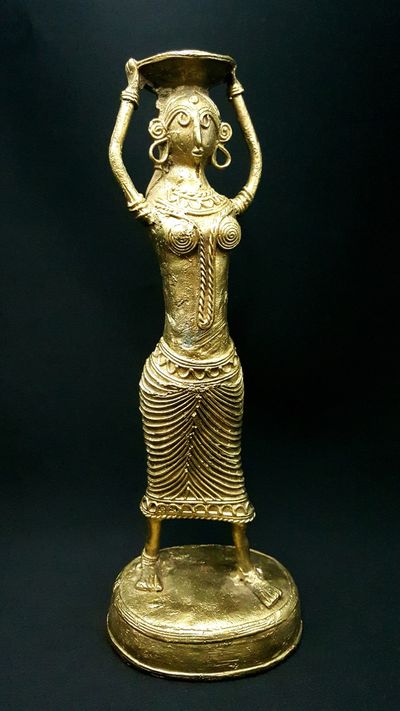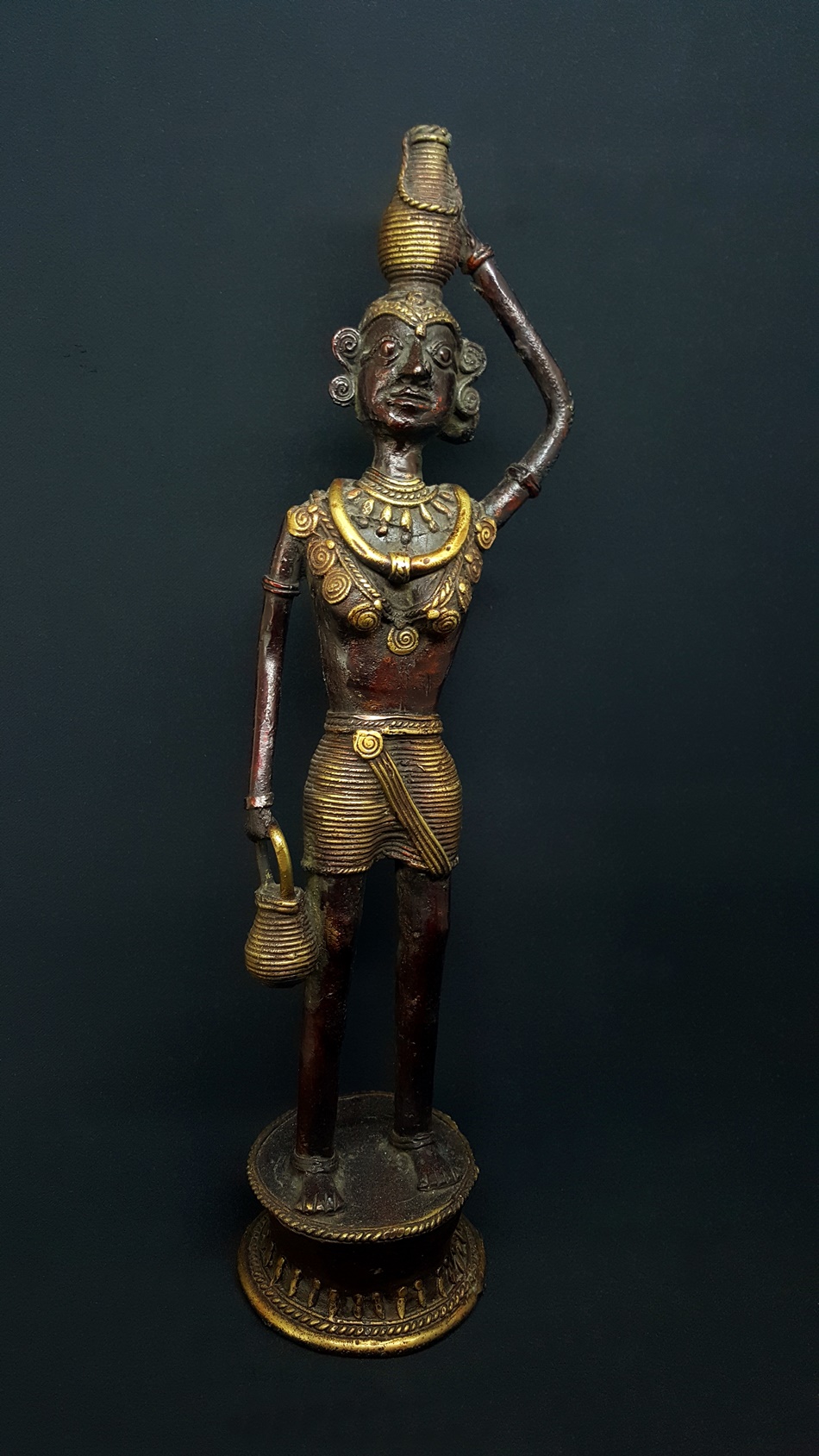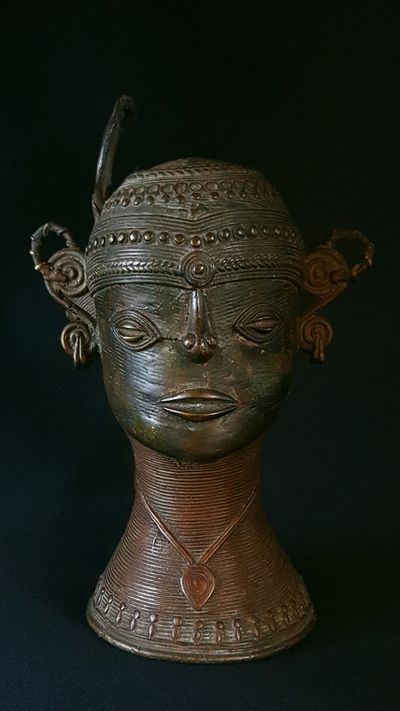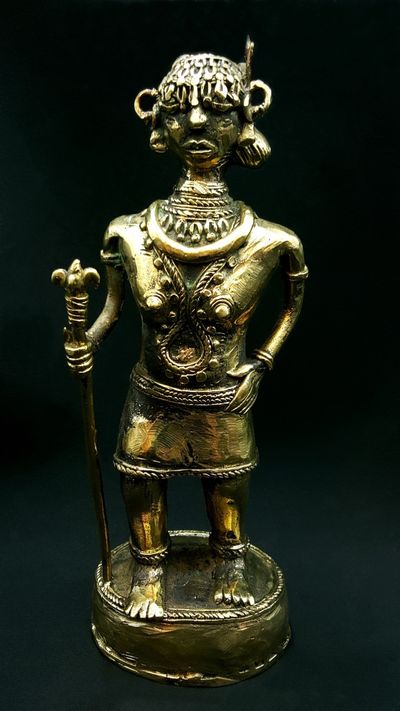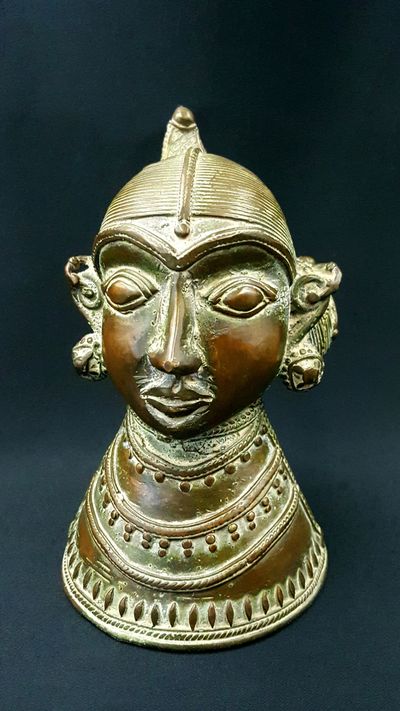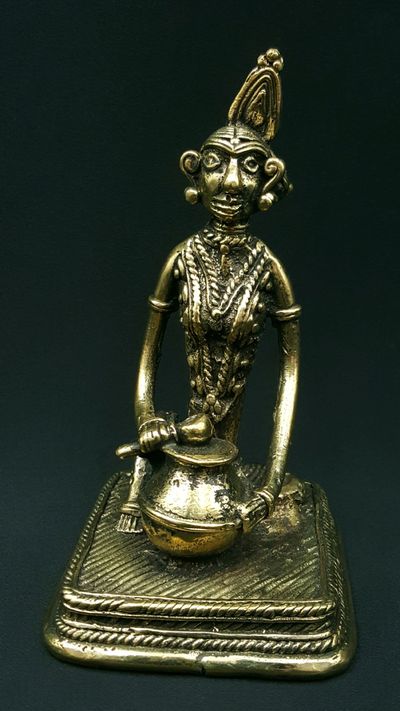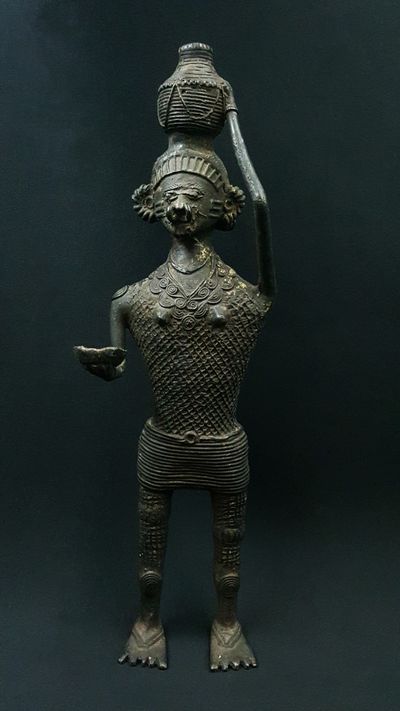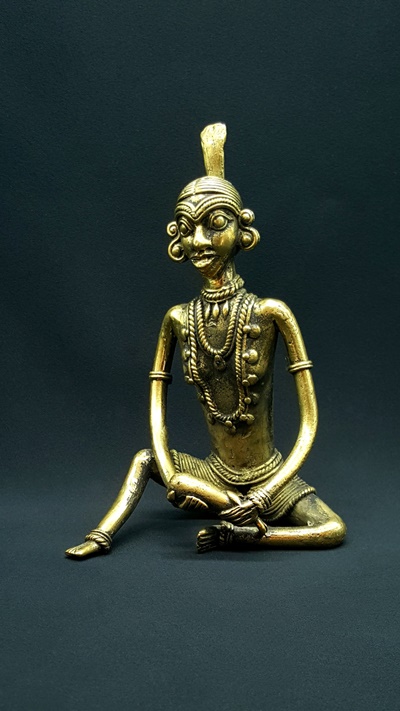Statue Bastar Femme Plume
Au-delà du temps
€149.00
Cette statuette de l’art tribal Indien du Sud, en laiton, représente la tête d’un femme Bastar ornée d’une coiffe de fête. Travail artisanal traditionnel et soigné. En savoir plus...
Hauteur : 17 cm
Poids : 0,810 Kg
Art tribal
Cire perdue
Origine : Chattisgarh - Inde
Livraison gratuite UE, Norvège et Suisse
Description
Les Bastars
Le Bastar est un district de l'Inde du Sud dans l'État de Chattisgarh, il fût un royaume indépendant du 14ème siècle jusqu'à son intégration à l'Inde en 1948.
La population tribale représente 70% de la population du district de Bastar: les principales tribus sont les Gonds - les Abhuj Maria et les Bhatras. La plupart ont gardé leur tradition (art culinaire, vestimentaire, fêtes...) et leur religion animiste.
Les tribus vivent encore principalement de l'agriculture et des ressources tirées de la forêt (chasse, plantes médicinales, bois...).
Certaines tribus se consacrent à la fabrication de statues en laiton depuis plus de 4000 ans. Cet art, que l'on retrouve aussi dans les États du Madhya Pradesh, de l'Odisha, dans l'Ouest Bengal, du Bihar... est appelé Dokra.
L'art Dokra : un savoir millénaire dans la fabrication de statues en laiton
Cet art tribal indien artisanal n'a pas changé depuis des millénaires (+ de 4000 ans) et la technique utilisée est toujours celle de la cire perdue : un modèle grossier en argile est réalisé puis recouvert de cire par l'artiste qui va lui donner sa forme définitive avec ses détails. L'ensemble est à nouveau recouvert d'un mélange argileux puis chauffé dans un foyer ouvert où un alliage cuivreux sera coulé. voir Blog
Les objets produits par les artistes Dokra peuvent être de nature usuels : coupelle, bougeoir... des instruments de musiques (cuivres), ou bien artistiques tels que des bijoux, des animaux : chevaux, éléphants, tortues..., des statues d'hommes et femmes représentant des scènes de vies quotidiennes et des divinités hindous adoptées par les tribus : Ganesh, Lakshmi,...
Buste Tête d'une femme ornée d'une coiffe de fête avec une large plume, sur le coté gauche. Les oreilles, représentées par un simple S sont enjolivées de magnifiques boucles d'oreilles orientées vers le ciel.
Les cheveux sont représentés parfaitement peignés, tirés en arrière avec une coiffure en chignon typiquement tribale.
Les traits du visage sont délicats, réduits à leur plus simple expression sans détails superflus. L'arête du nez est longue, le menton quasi absent, les sourcils sont inexistants. Les arcades sont très marquées et sont renforcées par la présence d’un bandeau frontal.
De nombreux colliers parent son cou gracile.
L'expression du visage de cette femme semble impassible, au-delà du temps.
A noter : chez les Bastar, cette statuette est toujours accompagnée du buste masculin orné de cornes.
